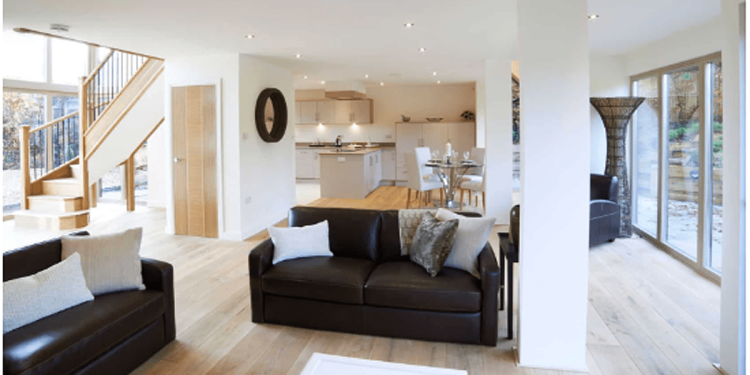Your basement, often an overlooked and underutilized space, has the potential to become a valuable asset in your home. With proper planning, creativity, and attention to essential considerations like basement waterproofing, you can transform your basement into a functional and inviting living area.
In this comprehensive guide to basement renovations, we’ll explore the step-by-step process of turning your basement into a space that enhances your lifestyle, increases your home’s value, and provides a haven for your family.
1. Assess the Condition of Your Basement
Before diving into any renovation project, it’s essential to assess the current state of your basement.
- Structural Integrity – Inspect the foundation, walls, and ceilings for any signs of water damage, cracks, or structural issues. Addressing these problems is a priority before proceeding with renovations.
- Moisture Levels – Check for moisture issues, including dampness, leaks, or mold growth. Identifying the source of moisture and addressing it is crucial for basement waterproofing.
- Ceiling Height – Ensure that your basement meets local building code requirements for ceiling height. Many codes stipulate a minimum height for habitable space, typically around 7 feet. If your basement falls short, explore options like lowering the floor or raising the ceiling.
2. Plan Your Basement Layout
Determine how you want to use your basement space and plan the layout accordingly. Common options to use your basement include gym, office, or converting your basement into a rental unit by adding a separate exit and making some other changes.
- Living Area – Create a cozy family room, a home theater, or a game room where your family can relax and entertain.
- Home Office – With the rise of remote work, a home office is a valuable addition that can provide a dedicated workspace.
- Bedroom – Transform your basement into a comfortable guest suite or an extra bedroom for your family.
- Fitness Center – Design a home gym to make staying fit and healthy more convenient.
- Storage – If storage is a priority, invest in efficient shelving, cabinets, and organization systems to keep your basement clutter-free.
3. Basement Waterproofing – The Foundation of Success
Basement waterproofing (when done correctly) is a critical step in basement renovations. It ensures that your newly transformed space remains dry and free from moisture-related issues like mold and mildew. Here are essential aspects of basement waterproofing.
- Exterior Waterproofing – This method involves excavating around the foundation, applying a waterproof membrane, and installing drainage systems. While effective, it is also an extensive and costly process.
- Interior Waterproofing – Interior waterproofing is a more cost-effective option. It typically includes installing a perimeter drain system, a sump pump, and applying waterproof coatings to the interior walls and floor.
- Moisture Control – Implement moisture control measures such as proper ventilation, dehumidifiers, and regular maintenance to maintain optimal humidity levels in your basement.
4. Create a Comfortable Atmosphere
Once your basement is waterproofed, it’s time to create an inviting living space. Here’s how to enhance comfort –
- Lighting – Select warm and soft lighting to create a cozy ambiance. Use a combination of overhead fixtures, wall sconces, and floor lamps for flexibility.
- Color Palette – Choose warm and neutral colors for the walls and furnishings. Earthy tones like beige, taupe, and soft greys can make the space feel inviting.
- Flooring – Consider moisture-resistant flooring options like engineered wood, vinyl planks, or carpet tiles. These materials are both practical and comfortable underfoot.
5. Optimize Functionality
To make the most of your basement space, it’s essential to optimize functionality. Here are ways to do it.
- Multi-Functional Furniture – Invest in furniture that serves multiple purposes, such as sleeper sofas, storage ottomans, or wall-mounted desks.
- Built-In Storage – Incorporate built-in shelving and cabinets to maximize storage space. Customized storage solutions can help make the most of every square foot.
- Dividers and Screens – Use room dividers or screens to create separate zones within your basement, especially if you’re planning a multi-purpose space.
6. Heating and Cooling Considerations
Basements often have unique heating and cooling requirements due to their underground location. Ensure comfort by addressing considerations below.
- Insulation – Proper insulation is crucial to maintain a comfortable temperature. Insulate walls, ceilings, and floors to prevent heat loss in the winter and keep the space cool in the summer.
- HVAC System – Consider extending your home’s heating, ventilation, and air conditioning (HVAC) system to the basement. A separate HVAC system or ductless mini-splits are also options to regulate temperature efficiently.
- Heated Flooring – Radiant floor heating can be an excellent addition to a basement, providing even warmth during cold months.
7. Safety and Egress Requirements
Safety is paramount when renovating your basement. Ensure you meet local building codes, especially when creating bedrooms or living areas in your basement. Adequate egress is vital for fire safety, and it typically involves adding escape windows or doors that comply with regulations.
8. Consider Professional Help
Transforming your basement into a functional living space can be a complex endeavor. Consulting with professionals, such as architects, contractors, or interior designers, can help you make the most of your space and ensure that all aspects of the renovation, including basement waterproofing, are carried out correctly.
Your basement is a hidden gem waiting to be unearthed. With careful planning, proper basement waterproofing services, and creative design, you can turn this often overlooked space into a valuable addition to your home. Whether you envision it as a comfortable living area, a functional home office, or a cozy guest suite, the key to success is a well-planned and professionally executed renovation.
By following this guide and considering all the essential factors, you can unlock your basement’s potential and create a space that enhances your lifestyle and adds value to your home.





